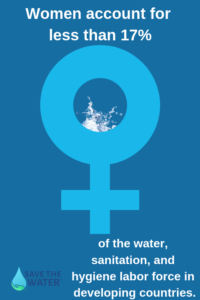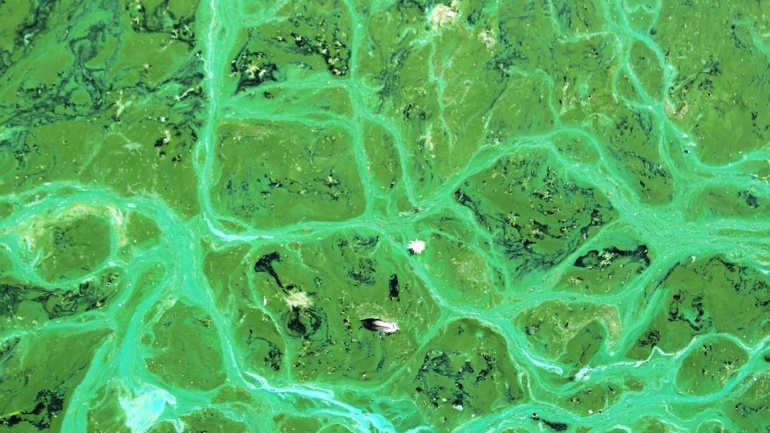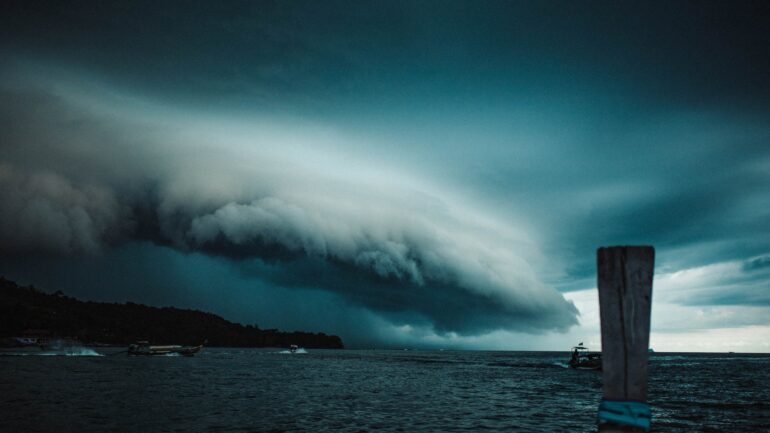By April Day, Director of Publishing for Save The Water™ | March 15, 2019
Including women in water decisions results in more clean water for all. Access to enough clean water for personal and domestic use is a basic human right.1 You would think that caregivers, mainly women, who amplify the effects of water would get access to clean water. They don’t. Many countries, cultures, and religions identify women as caregivers, and many are. But for many women and girls around the world, access to clean water is a dream. And they work hard for that dream. They collect, store, use, and reuse water. After that, they get rid of dirty, used water. In sum, to increase everyone’s access to clean water, women need to be included in the water decision-making process at all levels.
Women in Water: Getting Water
Access to clean water is a human right. This means 20 liters per person per day within one kilometer walking distance and a safe way to get rid of human waste.1 However, not everyone has this. As a result, one gender suffers more: women and girls. For example, in Zimbabwe, 53% of rural communities don’t have clean water. Therefore, women and girls travel 4 km on average to fetch water every day.2
For example, some girls, such as Precious in Zimbabwe, walk 3 km to collect water in a 20-kilo bucket. Then, she treks back.2 Fetching water makes up one part of their caregiving duties. It can be very dangerous for them. Many girls end up quitting school because of time consuming duties such as collecting water.2
Women in Water: Contact with Domestic Water
After getting water, women’s responsibilities include both the disposal and reuse of wastewater. Wastewater is dirty water after it’s been used (e.g. toilet bucket). Again, women are more likely to be exposed to health risks and toxins because of their roles as caregivers. For example, they come into contact with dirty water from taking care of children and reusing wastewater to grow food.3
Also, women and girls suffer without sanitation. For example, one girl came home crying to her dad. Kids teased her at school because she smelled bad. Her dad said, “‘I know she smells, but we do not have water in our place.” Because of this, she wanted to quit school. What did the dad do? He said, “The only thing I could do was to hug her and cry with her.”4
Additionally, women in water take care of households. For example, in Nile Delta Villages in Egypt, many households have tap water or public water taps. But they don’t have toilets connected to a sewer system.
Before 2004, wastewater was thrown into the canal or street. Women often used water from the canal for washing clothes and dishes. They had several reasons for this: less time fetching water, cleaner looking dishes, and cost.5
After the Egyptian national water authority phased out public standpipes and charged people for using water at home, women switched to canal water. In short, families simply couldn’t afford water. After all, the cost of water increased in a few months by 250%.5
Because of this change, families didn’t have the luxury of considering the risk of diseases.5 These diseases include diseases caused by parasitic worms that can damage the liver.6 Women in water exposed themselves to these types of risks every day to care for their families.
Women in Water: Contact with Floods
According to a previous article by Save the WaterTM Researcher & Writer Erin Fee, any contact with floodwater could be dangerous. Add to this many women’s roles as caregivers. First, let’s look at cooking. For example, in the Mozambique floods of 2000, many women couldn’t access clean water. As a result, they had to use floodwater for cooking. Therefore, they had to increase the risk of a disease outbreak.1 Keep in mind: many women aren’t cooking just for themselves. When women can’t access clean water for cooking, the whole community suffers.
Second, let’s look at taking care of the home. According to the United Nations, in Bangladesh in 2004, national agencies set out to identify best practices for three responses to floods: (1) preparing for floods; (2) reducing risks; and (3) spreading information, particularly to women at home. Floods impacted men less because they left home for work, whereas women were at home.1 The agencies had found out that women often weren’t getting flood warnings.
After the study, the national agencies decided to use several approaches:
- Posters
- Flag systems
- Drums
- Broadcasts from mosques1
These changes allowed access to information to women who couldn’t read so they could organize and evacuate before a flood. These warning systems targeting women “considerably improved preparedness during floods in 2004.”1 In other words, when women know about floods, they prepare.
Include Women in Water Decisions
For over 20 years, studies have shown that when both men and women are involved in water decisions, the results are better than when women aren’t involved.7 That is to say, involving women in water decisions helps development efforts, sustains water sanitation, and helps sanitation campaigns. However, many sectors leave women out of education related to water and the decision-making process for water.1
Despite being primarily responsible for providing water, women don’t have access to opportunities to manage water on a large scale.1 Perhaps this results from a horrible cycle: girls spend so much time getting water, they quit school. Schools don’t have toilets, so girls quit when they start menstruating: 23 percent of girls in India drop out of school when they start menstruating. How can they take advantage of water aid without an education? How can they continue education without access to water?
As of 2004, many plans for providing better access to safe, clean water in developing countries such as Pakistan focused on technology, and, by extension, on professional sectors led by men. These areas require a high level of education. There’s nothing wrong with that in itself.1
However, there is a gap between plans used and results. According to a World Bank study of 122 projects, water projects that included women proved 6 to 7 times more effective than projects that didn’t.7 In short, those projects got more clean water. Because of this, more people enjoy a healthier life, can pursue education, and do activities that make money.1 It works better for all.
However, women account for less than 17 percent of the water, sanitation, and hygiene labor force in developing countries.7 Additionally, women make up only a small part of policymakers, regulators, management, and technical experts.7
What You Can Do to Help
Making water services private doesn’t help: it doesn’t increase access to water for poor women.9 That is to say, here are four things that can help:
- Encourage women and girls to enter water sector jobs.
- Tell your family, friends, and neighbors about these issues.
- Donate to programs that include women in water management and decisions.
- Donate to Save the WaterTM to increase awareness about these issues.
References
- Inter-agency Task Force on Gender and Water, UN Water and the Interagency Network on Women and Gender Equality. June 2006. “Gender, Water, and Sanitation: A Policy Brief.” http://www.un.org/waterforlifedecade/pdf/un_water_policy_brief_2_gender.pdf
- Care. “Bringing Water to Families: Our water, sanitation and hygiene project in Zimbabwe.” https://www.care.org.au/zimbabwe-water-sanitation-hygiene/
- Marnie Cunningham. November 17, 2017. “4 Reasons Water & Sanitation Are a Gender Issue: Women are more at risk than men.” https://www.globalcitizen.org/en/content/4-reasons-water-and-sanitation-are-a-gender-issue/
- Office of the High Commissioner on Human Rights, United Nations. October 3, 2011. “Women and girls and their right to sanitation.” https://www.ohchr.org/en/newsevents/pages/womenandgirlsrighttosanitation.aspx
- Susan Watts. November 2004. “Women, Water Management, and Health.” Emerging Infectious Diseases, 10(11). https://www.ncbi.nlm.nih.gov/pmc/articles/PMC3328991/
- WebMD. “Schistosomiasis.” https://www.webmd.com/a-to-z-guides/schistosomiasis#1
- Kate Thompson, et al. January 23, 2017. “Thirsty for change: The untapped potential of women in urban water management.” DeloitteInsights. https://www2.deloitte.com/insights/us/en/deloitte-review/issue-20/women-in-water-management.html#endnote-sup-5
- International Water Association. 2014. “An Avoidable Crisis: WASH Human Resource Capacity Gaps in 15 Developing Economies.” http://www.iwa-network.org/downloads/1422745887-an-avoidable-crisis-wash-gaps.pdf
- Rebecca Brown. February 25, 2010. “Abstract: Unequal burden: water privatisation and women’s human rights in Tanzania.” Journal of Gender and Development. https://www.tandfonline.com/doi/full/10.1080/13552071003600042?scroll=top&needAccess=true&





